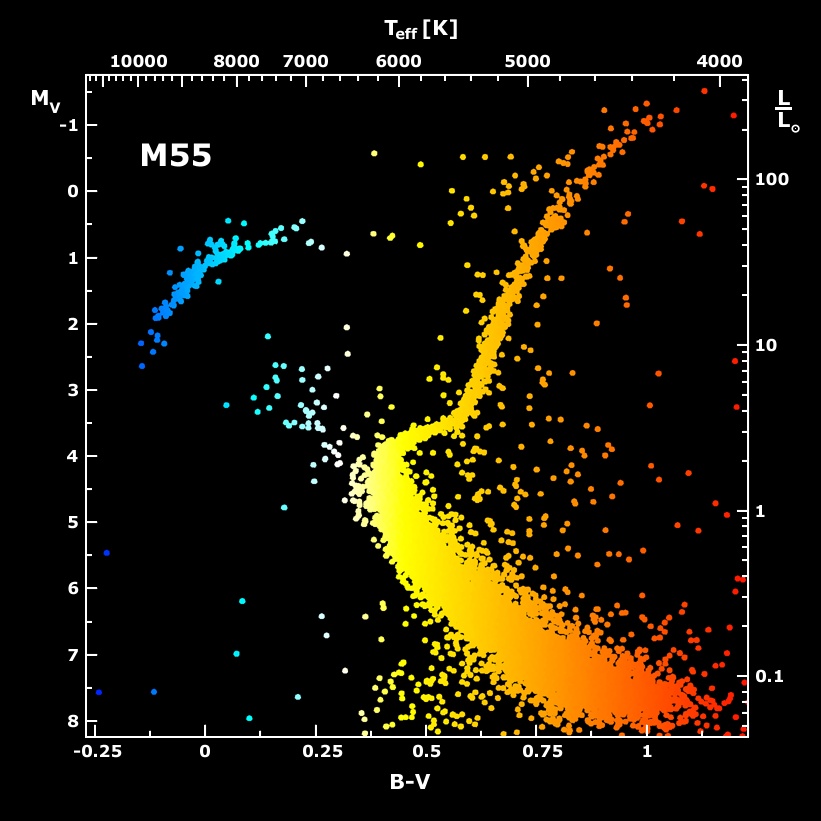Daily APODian wrote:
Sure you've heard the question before, the stars in the blue arc, how are they possible in a globular cluster of that age? Since they're more massive and burn hotter why haven't they supernovaed long before now?
And the blue stragglers in M5 are clustered towards the core as in the Tuc example? Blue straggler core clustering is the rule in globulars?
The stars in the "blue arc" are called blue horizontal stars, and they are not necessarily very massive. All stars that are at least moderately massive (like, say, the Sun)
and are very metal-poor (meaning that they contain extremely small amounts of elements heavier than hydrogen and helium) will naturally pass through the "blue horizontal branch".
Here is how it works, the way I understand it. The metal-poor star that is moderately massive (not massive enough to go supernova) will, after it has run out of hydrogen in its core, expand to become a red giant. The star has now left the main sequence and is on the red giant branch. The reason why the red giant expands is because its core is contracting, now that there is no fusion taking place there. But there is a shell around the core where there is still hydrogen, and here hydrogen is being fused to helium. So during this process the core of the red giant shrinks while its outer layers expand.
But while the core is shrinking, its temperature is rising. Eventually it becomes hot enough to start fusing helium into oxygen and carbon. When this happens, the outer layers of the bloated red giant shrink quite dramatically. When the outer layers of the star move much closer to the now really hot core, the outer layers also get much hotter. The photospheres of of these stars now shine with a blue light. These stars are also brighter than they ever were during their main sequence days, in the same way as red giants are also brighter than they ever were during their main sequence days. However, the blue horizontal stars are fainter the bluer they are. That is because the bluest horizontal branch stars have shrunk more than other horizontal branch stars. They are, quite simply, smaller.
Eventually the blue horizontal branch stars become unstable. I think, although I'm not sure, that they turn on and off the helium fusion in their cores while at the same time they turn on and off hydrogen fusion in a shell around their cores. These stars begin expanding dramatically, turning red again. They are not on the "asymtotic giant branch". Here they will become brighter and redder than they ever were on the red giant branch. But here their lives will end - they will eventually "slough off" their outer layers and become planetary nebulae and white dwarfs.
But it is
only the metal-poor stars that ever go through the blue horizontal branch phase. Our Sun, which is moderately metal-rich, will never become a blue horizontal branch star.
Here you can see the populations of two globular clusters which are not sufficiently metal-poor to have blue horizontal branches. They do have short horizontal branches, but their horizontal branches don't extend far enough to the left (to sufficiently high temperatures) for the stars which are located there to be blue.
Finally, are blue stragglers preferentially found near the cores of globular clusters? Yes, I think they are.
Ann
 Messier 5
Messier 5

